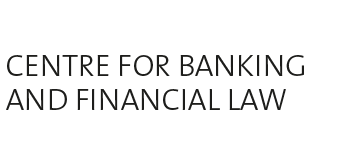Decentralized finance
A long-term risk ?

Yannick Caballero Cuevas
(Translated by DeepL)
On November 10, 2022, FINMA published its annual risk monitoring report. This report provides information on the seven risks that FINMA considers significant for the financial industry. These include interest-rate risk, credit risk for mortgages, credit risk for other loans, yield spread risk, risks associated with cyber-attacks, anti-money-laundering and sanctions risk, and risk associated with difficulties in accessing foreign markets. Most of the risks mentioned are directly or indirectly linked to this year’s tense geopolitical and economic situation.
In its section on long-term risks and trends, FINMA also addresses the subject of decentralized finance (DeFi). Coincidentally, one day after the report was published, cryptocurrency platform FTX filed for bankruptcy under Chapter 11 of the U.S. bankruptcy code.
FINMA refers to DeFi as “a wide variety of applications based on blockchain infrastructures that enable financial applications such as trading or credit transactions” (for a more specific definition, see cdbf.ch/lexique/finance-decentralisee-defi). For FINMA, the common denominator of DeFi projects is the use of open blockchains – such as Ethereum or Solana – to process financial transactions automatically and without the intervention of traditional financial intermediaries. Although DeFi aims for decentralization, FINMA notes that many DeFi projects are operated or controlled by a handful of individuals or companies. Thus, the element of decentralization would be the blockchain ecosystem, but not the governance of DeFi projects. In addition, FINMA notes a lack of transparency in some DeFi projects, which poses a problem in terms of investor protection, since they would not have access to relevant information, particularly on risks.
In its report, FINMA points out that the assessment of DeFi projects is based on an economic approach. Prudential regulations are applied in accordance with the principles of same business, same risks, same rules and substance over form. Challenges in the supervision of DeFi projects include the allocation of responsibilities under current financial market law, and the inadequacy of current regulatory concepts due to the absence of clearly identifiable intermediaries. Furthermore, jurisdiction based on location is difficult to determine, since – as FINMA points out – DeFi projects have neither presence nor identifiable substance in a specific country, which raises questions in terms of cross-border supervision and collaboration.
In terms of risks, FINMA distinguishes between those for private clients and those for institutional players. For private clients, the main risk is the loss of assets due mainly to sharp fluctuations in crypto-currencies, errors in the design of the DeFi application, cyber-attacks or fraud. Institutional players are particularly exposed to operational, legal and reputational risks. Given the limited use of DeFi applications, they do not currently represent a systemic risk. The latest setbacks in the cryptosphere seem to confirm this observation. However, should their use become widespread among institutional players, FINMA recognizes that DeFi could threaten the stability of traditional financial markets.
In our view, FINMA’s approach to DeFi is to be welcomed. Indeed, it reiterates its pragmatic approach and leaves aside dogmatic debates on the subject. It is undeniable that the events of 2022 have highlighted the shortcomings of certain DeFi projects, such as the stablecoin TerraUSD and the FTX exchange platform. In the case of the latter, basic failings in terms of governance and financial reporting are evident – at this stage – from the bankruptcy documents. This shows that decentralized finance is no stranger to the problems encountered by traditional finance during financial crises. Human hubris is often at the root of such crises.




